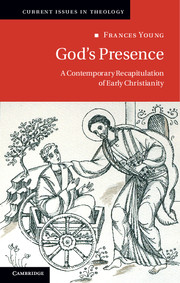Book contents
- Frontmatter
- Contents
- Preface
- Acknowledgements
- Abbreviations
- Introduction
- 1 From pondering scripture to the first principles of Christian theology
- 2 From cosmology to doxology: reading Genesis alongside Plato and Darwin
- 3 From creation to re-creation: nature and the naked ape
- 4 From image to likeness: incarnation and theōsis
- 5 From Adam and Eve to Mary and Christ: sin, redemption, atonement
- 6 From inspiration to sanctification: discerning the work of the Holy Spirit
- 7 From the church to Mary: towards a critical ecumenism
- 8 From dogma to theōria: the Christian God
- Epilogue
- Bibliography
- Index
- References
4 - From image to likeness: incarnation and theōsis
Published online by Cambridge University Press: 05 June 2014
- Frontmatter
- Contents
- Preface
- Acknowledgements
- Abbreviations
- Introduction
- 1 From pondering scripture to the first principles of Christian theology
- 2 From cosmology to doxology: reading Genesis alongside Plato and Darwin
- 3 From creation to re-creation: nature and the naked ape
- 4 From image to likeness: incarnation and theōsis
- 5 From Adam and Eve to Mary and Christ: sin, redemption, atonement
- 6 From inspiration to sanctification: discerning the work of the Holy Spirit
- 7 From the church to Mary: towards a critical ecumenism
- 8 From dogma to theōria: the Christian God
- Epilogue
- Bibliography
- Index
- References
Summary
Prelude
The mirror reflects a perfect image but back to front; while the xerox-machine turns out a pile of copies that are identical, multiple images indistinguishable from the original.
The artist produces an image which, however faithful a representation of the subject, is necessarily other; while the portrait-painter surveys her work, searching for the touch that would deliver the sitter's authentic essence.
The caricaturist demonstrates that ‘similarity is not essential to likeness’, an alien shape suggesting the image of a particular individual; while the cartoonist captures the comical reflection of the dame in her dog.
The image-maker endlessly modifies computer designs; while the photographer adjusts the illumination to produce telling highlights and shadows, manipulating the picture further through the process of development and printing.
The politician is artfullymadeup, then trained in self-presentation to create a positive image; while the sculptor of old would gently tap the chisel and smooth the high cheek-bone to perfect a likeness appropriate to the regal status of the model.
- Type
- Chapter
- Information
- God's PresenceA Contemporary Recapitulation of Early Christianity, pp. 146 - 201Publisher: Cambridge University PressPrint publication year: 2013



